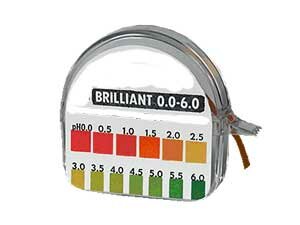Kefir Grains – Live vs. Dried – Which One is the Best Buy For You ?
Today someone searching to buy kefir grains on the web will find many sites selling ‘living’ kefir or dried/dehydrated kefir grains. For someone new to food culturing there are many questions…, What is the best source to buy kefir? What type of grains do I need? Where to get the best grains?
There are two types of kefir that one can buy, Milk kefir grains, which are a naturally occurring organism originating in the Caucasus or water kefir grains from Meso-America. Of the two, the live fresh active grains are the best buy for your money and time. However, both types offer benefits unique each to itself.
The fresh kefir grains re-balance quickly and begin producing drinkable pro-biotic kefir within just a few days of arriving after shipment. This is an excellent option if you live within the USA and are able to attend to them immediately.
If you are either
a) not located within the U.S. or
b) not able to attend to the fresh grains immediately upon arrival, then dried kefir grains are the best option for you.
These will take longer to activate – about a week or so to ‘wake up’ and adjust the balance to where they are producing a drinkable kefir beverage. This is a great option if the grains will be in transit internationally, since they are in a dormant stage and will not degrade or less likely to be damaged over the fresh grains. This also gives you the option to stick the dried grains in your cupboard or refrigerator if you receive them, but, are not ready to use them (or want to hang onto them as a backup source or a gift to give). Water kefir grains are known to sometimes be difficult to revive from a dried state (or just takes a long time) in some cases. Usually it’s hard to put the blame on any one thing, they just tend to be more fragile and pickier than milk kefir grains.
Below are a list of companies and websites that sell different kefir grain starters. Below is information from the company’s website pages on kefir:

Organic-Cultures.Com
From their website…“These kefir grains are real grains maintained on organic milk. Unlike the pre-packaged kefir starters, such as Cultures for Health, Helios, or Body Ecology, that you may find on other sites or selling in retail stores, these are the real living grains of the kefir culture. Our kefir grains are ready for use out of the packet, no failed productions or waiting several rounds for the kefir grains (milk or water types) to become ‘active’ again. You will not find our strains of kefir grains in any store! These grains will last a lifetime with proper care. Our Kefir Cultures are Always Live & Fresh…Never Dried & Dehydrated.”
Benefits: Five different kefir types to choose from, plus many other food cultures. Fresh, active culture starters, organic grown, kefir is ready to use from the package and a first batch of kefir is ready within 24 to 48 hours. A 100% replacement guarantee, if the cultures are not viable.
Drawbacks: Not able to ship to international destinations (but for Canada) due to fresh raw nature of culture starters.
 Body Ecology
Body Ecology
From their website…”Contains 6 packets that can be used an average of 7 times each. Six tablespoons of previous batch will ferment 1 quart of liquid.”
Benefits: Convenience and great for short time usage,
Drawbacks: Isolated lab grown cultures, repurchase required, limited usage. Invest in real kefir grains for long term usage.
From their website…”Yogourmet kefir starter is prepared from selected strains of dairy cultures and yeast as well as kefir grains, so that each batch you make produces excellent quality kefir. Yogourmet kefir starter does not require the use of a yogurt maker, since the milk is incubated at room temperature for about 24 hours. Each box contains 3 envelopes of 2 X 5 grams and each envelope makes 2 liters of kefir”.
Benefits: Convenience and great for short time usage,
Drawbacks: Isolated lab grown cultures, repurchase required, limited usage. Invest in real kefir grains for long term use.
 Lifeway Helios Kefir & Other Ready to Drink Kefirs
Lifeway Helios Kefir & Other Ready to Drink Kefirs
From their website…”Putting a bottle of Lifeway Kefir in your hand just makes so much sense. It allows you to be proactive about your health, filling your digestive system with friendly bacteria. Lifeway Kefir is also loaded with nutritious ingredients.”
Benefits: Convenience in a ready to go drink and great for short time usage or when traveling,
Drawbacks: High price, isolated lab grown cultures, extra packaging, and limited pro-biotic content.
From their website…”Our milk kefir grains are shipped in a dehydrated state in a barrier-sealed packet. Upon receipt, the dairy grains can be rehydrated in fresh milk (this process usually takes 5 to 7 days) and then used to make kefir by adding the grains to fresh milk, stirring, covering, and leaving at room temperature until the desired consistency is reached.”
Benefits: Cultures are cheap to buy, due to mass production. Great for shipping to countries outside the USA.
Drawbacks: No moneyback or return policy. Small packet of lab produced and dried starter culture, leaving little room for error. Must rehydrate the grains before use, wasting milk and time. Dehydrated grains may not reactivat depending on the shelflife.
Each type of starter has it’s own benefits depending on what and how the cultures are to be shipped or transported. This is a final note on food cultures…”Buying or obtaining the freshest kefir or other starter cultures, one can, will assist in producing the best cultured and viable product. I suggest fresh culture over dried/dehydrated if possible.”, Nirinjan Singh, Director – Organic-cultures.com






